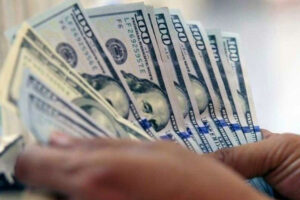External debt service burden jumps 14% as of end-November
THE COUNTRY’S external debt service burden jumped by 14% as of end-November amid a rise in both principal and interest payments, preliminary data from the Bangko Sentral ng Pilipinas (BSP) showed.

By Luisa Maria Jacinta C. Jocson, Reporter
THE COUNTRY’S external debt service burden jumped by 14% as of end-November amid a rise in both principal and interest payments, preliminary data from the Bangko Sentral ng Pilipinas (BSP) showed.
Debt servicing on external borrowings rose by 14% to $15.735 billion in the 11-month period from $13.808 billion in the same period in 2023.
Central bank data showed principal payments increased by 12.9% to $8.39 billion from $7.431 billion in the same period in 2023.
Amortization payments accounted for over half (53.3%) of total debt servicing during the period.
Meanwhile, interest payments jumped by 15.2% to $7.345 billion in the January-to-November period from $6.377 billion a year ago.
The BSP said that the debt service burden represents principal and interest payments after rescheduling.
This includes principal and interest payments on fixed medium- and long-term credits including International Monetary Fund credits, loans covered by the Paris Club and commercial banks’ rescheduling, and New Money Facilities.
It also covers interest payments on fixed and revolving short-term liabilities of banks and nonbanks.
However, the debt service burden data exclude prepayments on future years’ maturities of foreign loans and principal payments on fixed and revolving short-term liabilities of banks and nonbanks.
Latest data from the BSP showed the Philippines’ outstanding external debt hit a record $139.64 billion as of end-September, higher by 17.5% year on year.
Broken down, this was composed of $86.88 billion in public sector debt and $52.76 billion from private sector obligations.
This brought the external debt-to-GDP ratio to 30.6% at the end of the third quarter.
At end-September, the external debt service burden as a share of gross domestic product (GDP) stood at 3.9%, up from 3.5% in the previous year.
The BSP’s external debt data cover borrowings of Philippine residents from nonresident creditors, regardless of sector, maturity, creditor type, debt instruments or currency denomination.
“The higher external debt service was largely due to higher interest rates and weaker peso since 2022, as well as the need to finance wider budget deficits that increased the need for total both local and foreign borrowings,” Rizal Commercial Banking Corp. Chief Economist Michael L. Ricafort said.
Though the central bank began cutting rates in August last year, BSP Governor Eli M. Remolona, Jr. has said the policy rate is still in “restrictive territory.”
The central bank cut rates by 25 basis points at each of its last three meetings last year, bringing the key rate to 5.75%.
The Monetary Board last week kept interest rates steady amid global uncertainties.
The peso was under pressure towards the fourth quarter of 2024. The local unit fell to the record-low P59-per-dollar level twice in November.
Latest data from the Treasury showed the budget deficit ballooned to P1.18 trillion in the January-to-November period from the P1.11-billion deficit last year.
“Going forward, the National Government (NG) reduced the share of foreign borrowings in its overall borrowing program to reduce forex risks involved in external borrowings denominated in US dollars or foreign currencies,” Mr. Ricafort said.
Finance Secretary Ralph G. Recto has said they will continue lowering the share of external borrowings in its borrowing program.
From this year to 2027, the NG plans to source at least 80% of its borrowing program from domestic sources, and 20% from foreign lenders. The government previously adopted a 75:25 borrowing mix.











